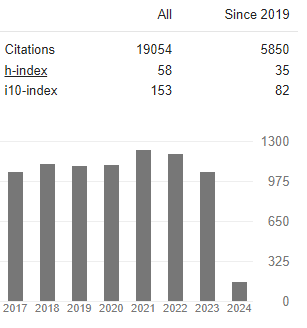Effect of Salinity and Humic Acid on Growth, Biomass, and Yield of Mung Bean (Vigna Radiata L.) Cultivars
Abstract
Abhiruchi Vijay Patankar, Bhavna Nigam and Indra Jeet Chaudhary
Higher salinity affects 20% of farmed land and 33% of irrigated land area globally. These affect causes food crises worldwide. Humic acid provide protection against stress and promote the plant growth and productivity. Therefore, this study focuses on dose response relationship between exogenous applied humic acid and salt stress on Mung (Vigna radiata L.) cultivars. Resultants theapplication of humic acid under salt stress improvedthe plant growthand yield of selected cultivars. The higher salinity (100 ppm) caused higher effect on both selected cultivars than 50ppm salt as compared to control plants. While applied protectants 40%HA with 50 ppm salt is more effective than 40%HA with 100ppm salt in both selected cultivars. Based on biomass and yield reduction Pusa Baisakhi is least sensitive to salt than ML-131. Study also concise that salt stress depends on growth stages of plant and higher biomass reduced at 20 DAS in cultivar Pusa Baisakhi (-11.15%) and at 40 DAS in cultivar ML-131 (-25.62%). The higher production of yield due to application of humic acid was seen (65.95%) in cultivar ML-131 than cultivar Pusa Baisakhi (8.54%). Therefore, the study promoted that under salt stress conditions humic acid uses as a protectant and cultivar Pusa Baisakhi as a tolerance species will be useful tool for sustainable agriculture.





